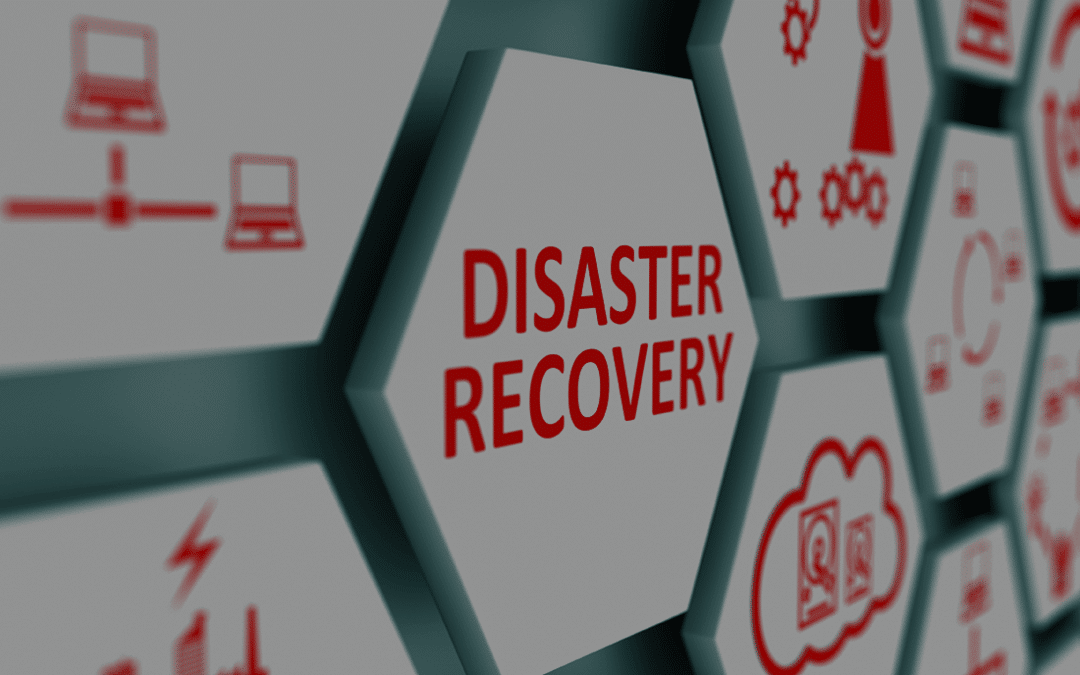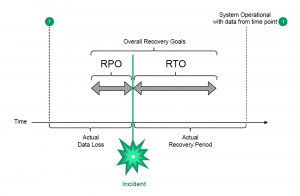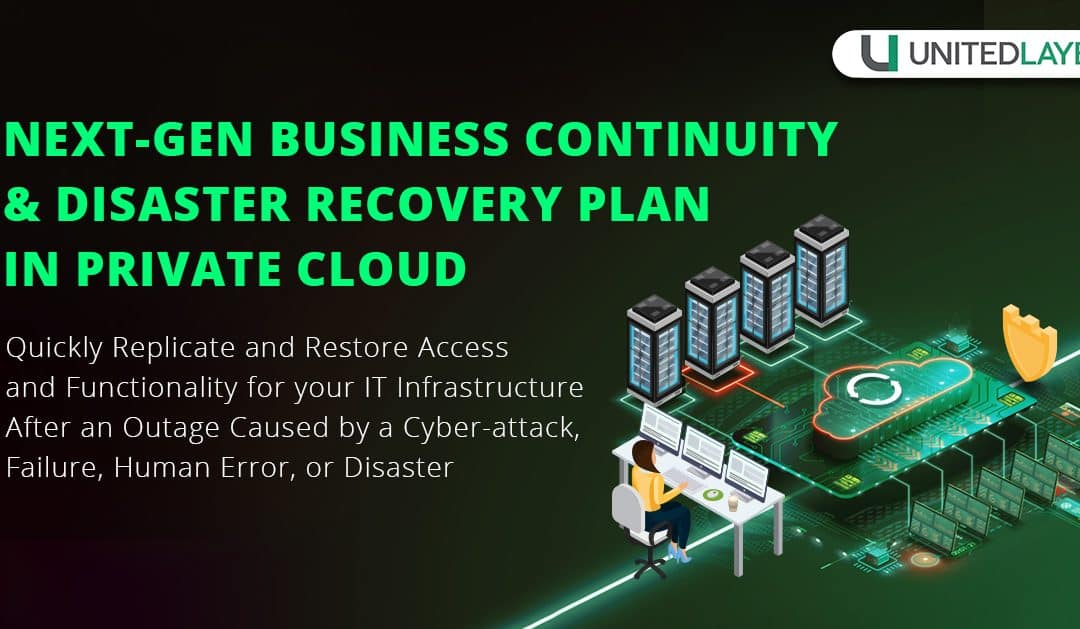
Importance Of Business Continuity And Disaster Recovery In Private Cloud Environment
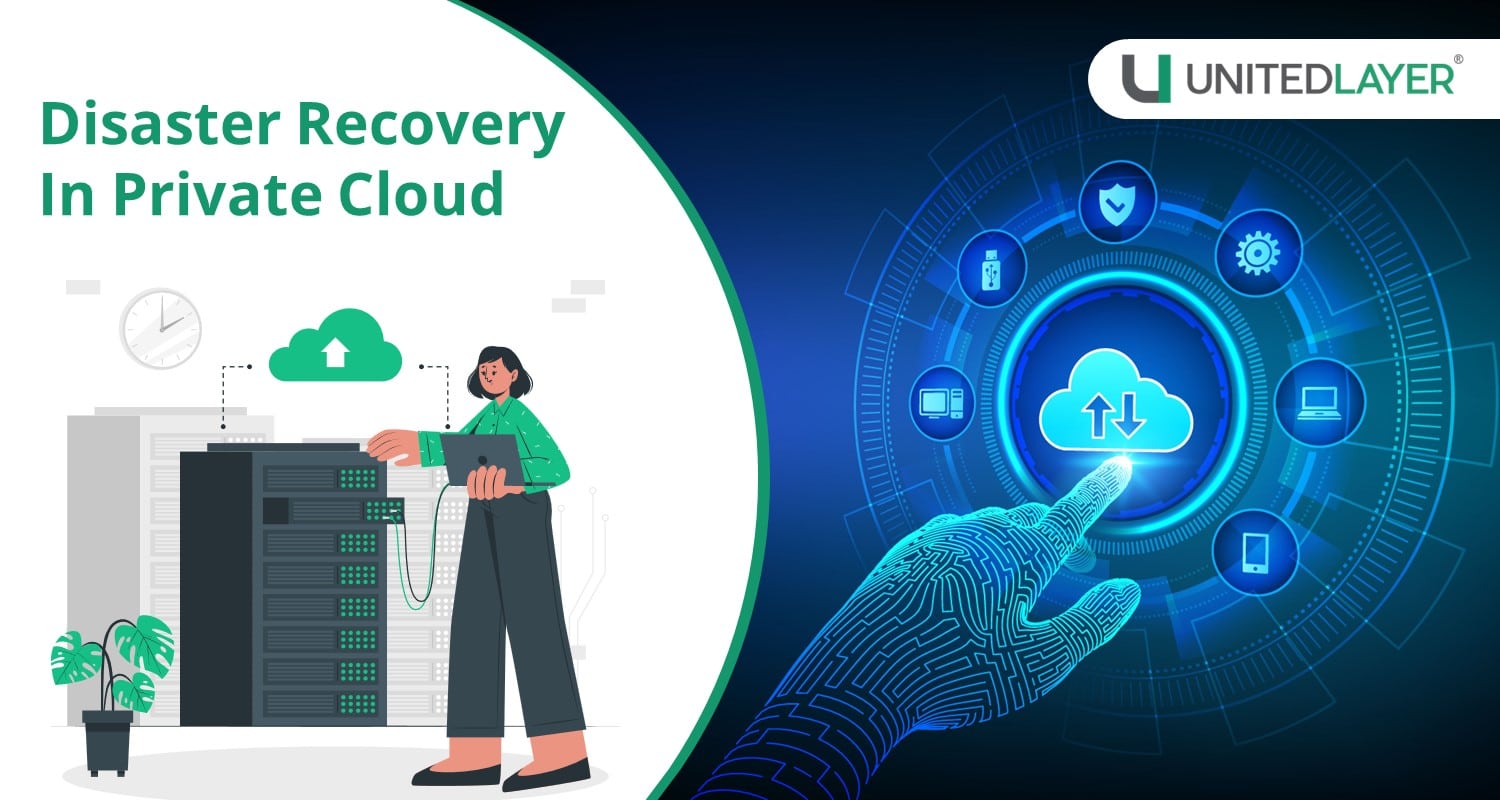
Disaster Recovery in cloud computing is becoming more accessible to businesses of all sizes due to widespread cloud adoption and virtualization technologies that facilitate backup and replication.
Organizations now need to update and, in many cases, rethink their approach to risk management, particularly Disaster Recovery, due to the significant changes in how, where, and when employees work. New techniques, procedures, and solutions are required to consider substantial changes in workforce deployment. This blog explores challenges, implications, and possibilities for Disaster Recovery in a world that is changing quickly.
According to Gartner, the average cost of IT downtime is $5,600 per minute. For large organizations, that number exceeds half a million dollars hourly.
Which Solution Is Better For Disaster Recovery: Private Or Public Cloud?
When it comes to cloud Disaster Recovery, shared resources are the primary distinction between private and public clouds. Data recovery to shared resources is possible in both clouds. However, most resources in a private cloud are separate, allowing you to isolate them onto a different infrastructure. The cost-effectiveness of Disaster Recovery methods increases with the number of shared resources.
Private cloud storage, as opposed to public cloud storage, is for businesses that do not want to store their data in a shared location. Isolated and dedicated cloud storage is preferable for such a business because it offers more control and no noise. Your organization will benefit from ultra-low latency in the private cloud. When performing backup and replication jobs to the cloud, ultra-low latency speeds up and simplifies the process. Rapid recovery is essential to minimizing downtime, and high latency may result in additional downtime.
In other words, private clouds provide more customization in Disaster Recovery planning. The user can deploy the private cloud in a personalized way to meet their needs.
For instance, a bank’s IT infrastructure manages enormous amounts of transactional data. Security and customized performance are required for this data. It can be challenging to meet these needs using a public cloud, but private cloud storage enhances the user experience and provides what is required.
Similarly, private cloud storage technology is more suitable for use-cases when the user has unique requirements and must always maintain control than public cloud storage technology.
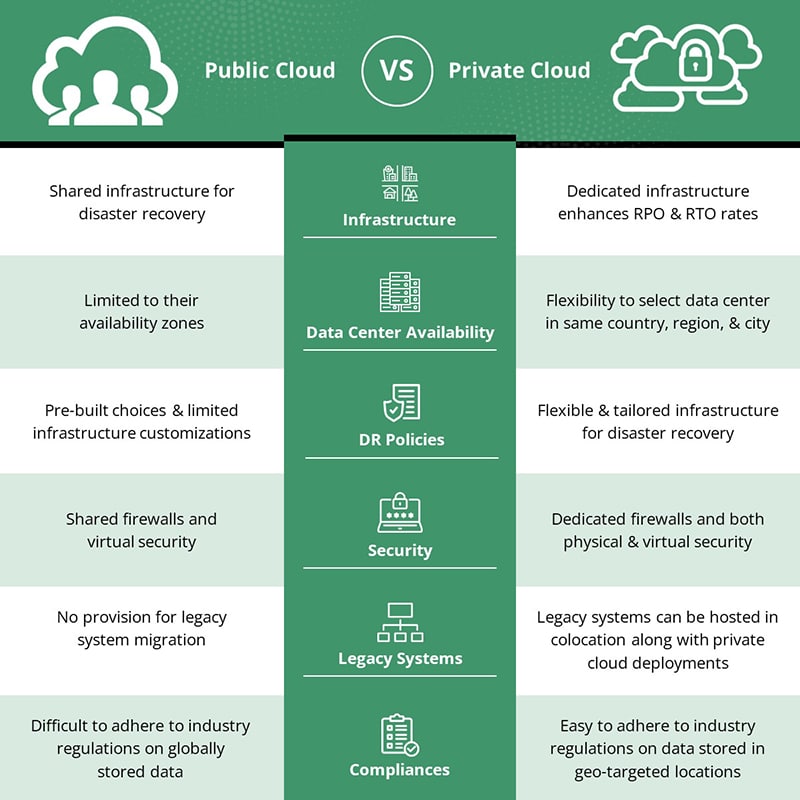
If your business requires to ensure that all data is secure while it is in transit and at rest. A private cloud hosting package makes this possible. It will provide advanced firewalls, two-factor authentication, and intrusion detection and prevention measures. Therefore, the robust security of the data will be ensured by all these specialized resources.
According to Gartner, by 2025, 51% of IT spending will shift to the private cloud, compared to 41% in 2022. Almost two-thirds (65.9%) of spending on application software will be directed toward cloud technologies in 2025, up from 57.7% in 2022.
While migrating workloads from on-prem environments to public cloud environments, public cloud providers cannot provide the customized hypervisor requirements for the existing customer workloads.
While in the case of private cloud, users have the flexibility of choosing their hypervisors powered by a few of the leading hypervisors like Hyper V, OpenStack, KVM, VMware, etc. Because the infrastructure is dedicated rather than multi-tenant, where enterprise-grade data is explicitly stored in the locations that the customers exclusively access, this gives users an upper hand in managing their data sovereignty and other multiple compliances. Workload performance is predictable and unaffected by other organizations sharing infrastructure or bandwidth.
As companies migrate to the cloud, data sovereignty—the notion that some data is subject to a country’s laws and where it is held within specified borders—becomes more of a challenge for them. Some regions have relatively strict data sovereignty laws in place that include factors like where the data is stored and the laws it must abide by. Most businesses are adopting a cloud-first strategy, so these restrictions might pose a severe challenge for firms. For example, countries like Russia, China, Germany, France, Indonesia, and Vietnam require their citizen’s data to be stored on physical servers within the respective countries. Since, in private cloud Disaster Recovery, the data owner has complete control over the location of data storage. Hence this has become the go-to reason for hosting Disaster Recovery in private cloud environments.
Also, the rules of multiple nations may apply to the data kept in cloud computing services. Different regulatory regulations for data security, privacy, and breach reporting may apply depending on where the data is being hosted or who is in charge. Legal constraints may particularly impact organizations using public cloud solutions because each cloud deployment must abide by different local regulatory requirements.
Fortunately, a private cloud strategy may address many of the issues posed by data sovereignty. Businesses can continue with their clients if they abide by local legal requirements. Most Private Cloud IaaS providers like UnitedLayer® have 100+ in-country data centers globally. Furthermore, key features in a private cloud, such as encryption and other security-as-a-service options, make it possible for customers to comply with local regulations.
According to the Uptime Institute’s 2022 annual outage analysis, for the past three years, public cloud outages are constantly occurring where ~70% – 80% of data center managers say they faced outages.
On average, one of the three major public cloud providers — AWS, Microsoft Azure and Google Cloud — experienced an outage lasting at least 30 minutes every three weeks in 2021, according to Parametrix.
How Has Disaster Recovery Changed To Post Pandemic?
In direct correlation with the increasing significance of data, applications, and other digital assets over the past years, Disaster Recovery has grown more and more critical. System upkeep is crucial since businesses, their clients, and their entire business ecosystem is becoming more and more dependent on technology. Getting systems back online and restoring data to its most recent known state after unplanned outages might make the difference between a successful organization and one that fails.
Cyber threats, including mobile malware, phishing, and ransomware, have dramatically increased due to the pandemic and the increased use of consumer-class devices in home settings. As a result, there are now significantly more threat vectors and a greater sense of urgency to identify, protect, and defend potential sources of data breaches, service interruptions, and expensive downtime.
It is also evident that using remote locations for Disaster Recovery and fail-safe operations makes it more challenging than ever to reduce distance-induced latency, increasing the need for enterprises to include latency reduction in their Disaster Recovery strategies.
New Disaster Recovery Methods And Solutions
To meet the challenges posed by these significant shifts in workforce deployment and to provide reliable, rapid, and documented failover and recovery, new Disaster Recovery in the private cloud environment is required. Even though almost all businesses have some Disaster Recovery plan in place—if not always in a ready-to-go state—many companies created those plans years ago. The new developments like Edge cloud deployments, new cyber threats, and the “new normal” of remote work are now having a dramatic impact on enterprise Disaster Recovery plans.
This demands the upgrading and possibly reworking of Disaster Recovery plans in the private cloud to incorporate a wide variety of new capabilities. These consist of:
- The capability to improve responsiveness and significantly reduce latency as geographic coverage regions grow.
- Incorporating remote access and mobility into the overall Disaster Recovery plan.
- Coverage from the data center to the edge to the cloud.
- Disaster Recovery is a component of an overall framework for business continuity and a thorough risk management strategy closely connected to primary business objectives.
- Establishing a flexible recovery and production environment that is in line with each company’s particular objectives and conditions.
Working With UnitedLayer® On A Modernized Disaster Recovery Framework
New methods for Disaster Recovery are crucial in this digital transformation era, characterized by widespread mobility, Edge Cloud deployments, always-on low latency connectivity, and remote work. Because of this, businesses need to look for technology partners who can bring a new, broad perspective to disaster recovery and show a successful track record in assisting businesses in identifying, reducing, and mitigating the effects of risks to system and application availability.
UnitedLayer® has a long history of leading the market for its disaster recovery solutions. It has proven to be a valuable business partner for companies with complex and distributed IT ecosystems.
Our Disaster Recovery solutions are highly customizable and come with ultra-low latency options, where customers can build specific Recovery Point Objectives (RPO) and Recovery Time Objectives (RTO) according to their business requirements. It also enables you to perform failover testing without bringing the network down and disrupting the business. With on-demand scalability, you can add additional resources to meet the increased replication needs, this helps in reducing cost and improve business flexibility. UnitedLayer’s® DR solutions are highly secure and compliant with all the government regulations and industry-leading compliance standards like HIPAA, PCI DSS, GDPR, SOX, FFIEC.
Find out more about how UnitedLayer® is assisting businesses with the design of Disaster recovery plans to guarantee that applications recover promptly when necessary and continue to offer seamless services to end users.
FAQ’s For Disaster Recovery
What is meant by Disaster Recovery?
Disaster Recovery is an organization’s process of regaining access and functionality to its IT infrastructure after events like a natural disaster, cyber-attack, or even business disruptions related to the COVID-19 pandemic. A variety of disaster recovery (DR) methods can be part of a disaster recovery plan.
What is the purpose of Disaster Recovery?
What is the best method for Disaster Recovery?
1. Backup is an obvious solution and the first step to recovering from data loss
2. Choose the Right Backup Category
3. Plan Effective Backup Strategy
4. Data Recovery Software
5. Document Critical Information
6. Test and rehearse the disaster recovery plan
How do you maintain a Disaster Recovery plan?
1. Make backups at intervals required by your disaster recovery plan for the level of data you are maintaining.
2. Check your backups at regular intervals to ensure they are backing up your data as intended and the data are recoverable if needed.
What are the five testing types for a disaster recovery plan?
1. Walkthrough Testing.
2. Simulation Testing.
3. Checklist Testing.
4. Full Interruption Testing and.
5. Parallel Testing.
What is the difference between RTO and RPO?
What are the steps in disaster recovery?
1. Create your disaster recovery contingency planning team
2. List all names and contact details
3. Determine a chain of command
4. Consider your risk assessment
5. Do you have a ‘Plan B’
6. Protect your company data

